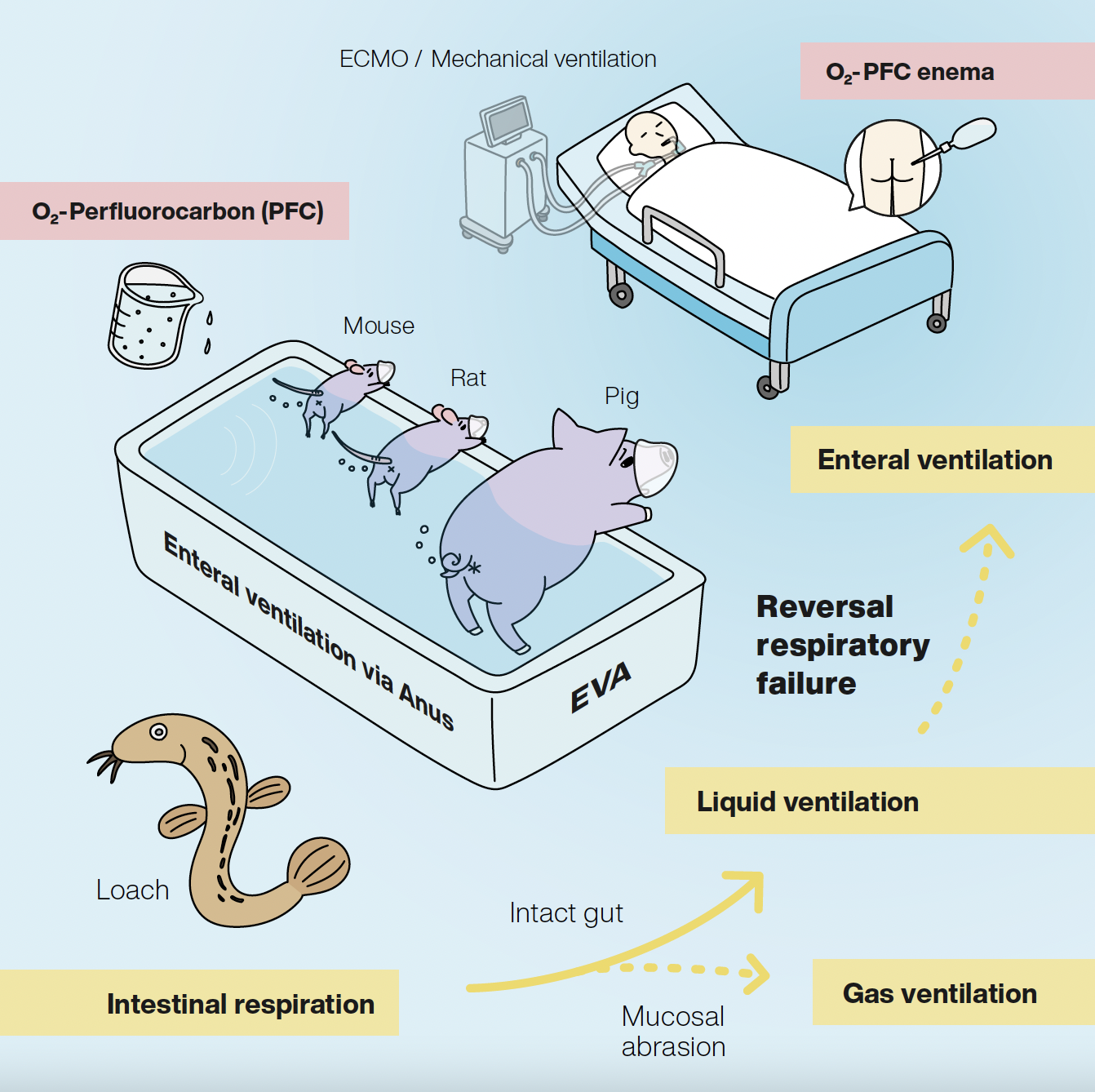Pigs Can Breathe Through Their Buttholes and So Could You, Scientists Say
Pink, fleshy, and round, the anus has a lot in common with the mouth and is every bit as important.
But the similarities don’t just stop there. Buttholes can also help animals breathe, new research suggests.
A team of scholars in Japan has found that pigs can absorb oxygen through the anus, in studies exploring treatment for people with respiratory conditions.
By pumping oxygen and oxygenated liquid through animals’ buttholes into their intestines, the researchers found that they could survive without breathing through their lungs.
“It's so impressive because we never thought of breathing from the gut, but it’s possible,” Takanori Takebe, an author of the study and a doctor at the Tokyo Medical and Dental University, told VICE World News.
Last year, his team and collaborators from Nagoya University Graduate School and Kyodo University’s Department of Respiratory Surgery published their study focusing on mice. Now they’re looking to submit their research on pigs, which are closer to humans in physiology and genetic makeup, to a U.S. medical journal in August.
The scientists were inspired to explore the unconventional breathing method by loaches, a freshwater fish that can use its intestines to breathe. They found that in extensive hypoxic conditions—when there isn’t enough oxygen available at the tissue level—the structure of loaches’ gut tissues changed to allow for easier breathing.
In order to see if mammals would also breathe through their anus in oxygen-deprived conditions, Takebe first tested mice. The findings, published in the journal Med last year, were “stunning,” he said.
“I’m always very skeptical about the results, but it turns out every time we do the tests, we can get reproducible datasets,” said Takebe, who practices medicine also at the Cincinnati Children’s Hospital Medical Center.

The study has implications for treating patients who suffer respiratory failure.
Normally when a patient needs oxygen, doctors opt for mechanical ventilation, in which a machine pushes air into the lungs through the windpipe. They can also use another technique called extracorporeal membrane oxygenation, when blood is pumped out of the body and reoxygenated with a machine.
But this procedure carries the risk of bleeding and blood clots. And as many emergency rooms saw during the early stages of the COVID-19 pandemic, it’s not always possible to get your hands on a ventilator.
With this in mind, Takebe thought, why not try the backdoor?
To test mammals, Takebe and his co-authors first pumped oxygen gas into the anuses of oxygen-deprived mice. They found that mice that received the treatment lived longer than the ones that didn’t.
Then they took the experiment one step further by eliminating barriers that could prevent oxygen uptake in the gut. They scraped the mice’s mucosa, the innermost layer of the gastrointestinal tract, and injected the gaseous oxygen into the animals.
This helped the rodents survive even longer. What’s more, unlike untreated animals, the mice with their mucosa removed stopped gasping for air altogether and showed no signs of cardiac arrest.
But given mucosal removal might be uncomfortable for patients, the researchers tried a different approach—delivering oxygen in liquid form.
They added oxygen to perfluorodecalin, a chemical that can dissolve large amounts of oxygen. In the past, the substance has been used to treat infants with severe respiratory distress and as artificial blood to improve tissue oxygenation. After shooting the liquid up the mice’s rectums, the scientists found oxygen levels were further improved. The same was true when they tested pigs and rats.
“In a 50-kilogram pig, when we provide this size of liquid oxygen to the butt, they can survive 30 minutes even when experiencing lethal respiratory failure conditions,” Takebe said.
Caleb Kelly, a gastroenterology fellow at Yale University who’s not affiliated with the study, described the scientists’ newfound method as “promising.”
“The pandemic has highlighted the need to expand options for ventilation and oxygenation in critical illness, and this niche will persist even as the pandemic subsides,” he wrote in a commentary accompanying the 2021 study.
But Kelly noted the animal models don’t fully imitate what critically ill patients might experience during respiratory failure, which often coincides with infection, inflammation, and low blood flow. These added factors could complicate the anal ventilation method when tried on humans.
Takebe plans to start human clinical trials as early as this year to prove its real-life efficacy.
Similar to how automated external defibrillators—portable medical devices used to help those experiencing sudden cardiac arrest—are placed throughout public spaces like buildings and schools, Takebe said a shot of liquid oxygen could be made available to save those suffering sudden respiratory failure.
After confirming the safety of this method by testing healthy volunteers in a hospital, Takebe said he planned to recruit patients with respiratory conditions to put his findings to the test.
Follow Hanako Montgomery on Twitter and Instagram.
#DmtDailyDMT.NEWS
via https://www.DMT.NEWS
Hanako Montgomery, Khareem Sudlow
